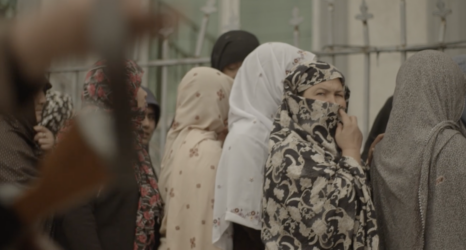As we approach the 2015 deadline for meeting the United Nation’s Millennium Development Goals, adopted in 2000, there is increasing pressure to improve the work on behalf of goals four and five: combating child mortality and improving maternal health worldwide.
To this end, the U.S. Agency for International Development (USAID) in collaboration with UNICEF, the Bill & Melinda Gates Foundation and the governments of India and Ethiopia, will be hosting a high-level forum in Washington, D.C., on June 25. Acting on the Call: Ending Preventable Child and Maternal Deaths will be an opportunity for activists to “celebrate the progress, assess the challenges that remain and identify the steps needed to sustain momentum in the future.”
The past 24 years have seen significant progress in the push to meet U.N. standards for improving the lives of mothers: Since 1990, the global number of maternal deaths has been cut nearly in half. This improvement is even more dramatic in Eastern Asia, Northern Africa and Southern Asia, where maternal deaths have declined by almost two-thirds—progress that almost meets the standard originally outlined in the Millennium Development Goals.
Encouraging as these figures might be, there is still work to be done. Access to reproductive health remains a serious issue for mothers worldwide, with pregnant women in developing regions being 15 times more likely to die than those in developed areas. Most notably, only half of women in developing regions receive the recommended amount of health care during pregnancy. These problems become especially concentrated in rural areas, which often lack adequate access to skilled child delivery services.
In countries like Eritrea, whose success has earned international attention, the U.N. reports that collaboration on a combination of public education and local-language training sessions for maternal caregivers has helped eliminate some of the serious health dangers associated with rural life.
The fight to end preventable child mortality has also achieved similarly encouraging success. The mortality rate for children under five has dropped by almost 50 percent since 1990. Targeted campaigns for specific regions and countries, especially those focused on immunization against preventable diseases, have been an important part of saving children worldwide. Measles vaccines alone have saved over 10 million lives since 2000, according to the U.N..
Again, however, as dramatic as a 50-percent drop may be, it is still short of the targeted two-thirds decrease projected in 1990. The need for continued action is especially pressing given the World Health Organization’s reporting that “more than half of these early child deaths are due to conditions that could be prevented or treated with access to simple, affordable interventions.”
In the end, a mother’s health is directly connected to her young child’s health. U.N. Secretary General Ban Ki-moon, recognizing this important connection, launched Every Woman Every Child in 2010. The global campaign, which Ban Ki-moon called “long overdue,” “aims to save the lives of 16 million women and children by 2015″—an energetic target meant to to close 25 years of action on behalf of the Millennium Development Goals. Answering the question “Why does this matter?” the campaign website explains:
Research has conclusively demonstrated that the health of women and children is the cornerstone of public health. Healthy women and children create healthy societies. Healthy societies, in turn, are the foundation upon which nations build successful economies and create prosperity for their people. And prosperity, as we know, is essential to political stability and social harmony.
Unfortunately, the U.N. is not projected to meet its 2015 Millennium Development Goals on improving maternal health and reducing child mortality. With so many women and children worldwide suffering from inadequate healthcare and premature deaths, this shortcoming is more than just a disappointment; it’s a tragedy. Though significant progress has been made, the particularly severe conditions in regions like Southern Asia and Sub-Saharan Africa underscore the clear need for renewed global action.
This doesn’t have to be the end, however. If anything, the two-and-a-half decades of action towards improving lives around the world have mobilized individuals, organizations and networks that can help take us beyond 2015 to create a world that guarantees “a life of dignity for all.”
Mother and newborn at the Maternal & Child Health Training Institute for medically needy individuals in Dhaka, Bangladesh from United Nations Photo via Creative Commons 2.0.





